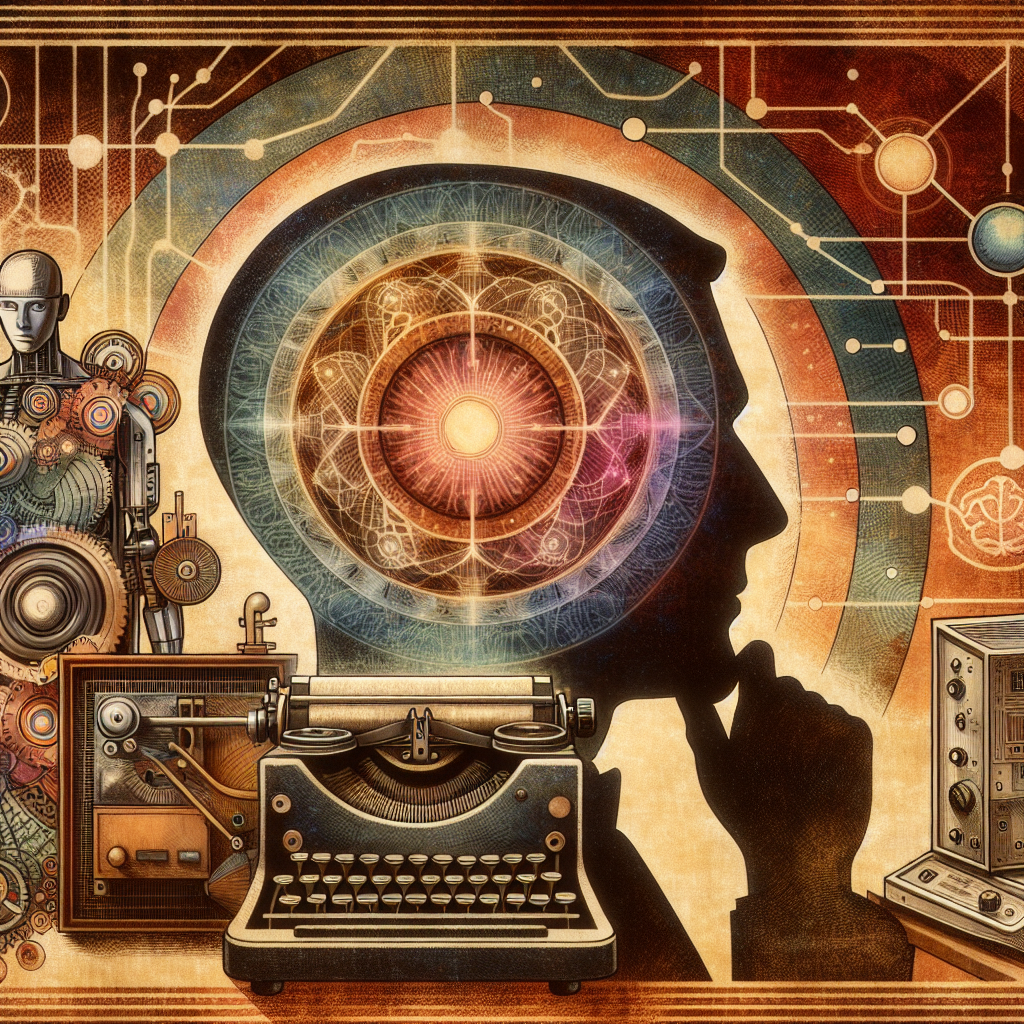Are you curious to learn about the intriguing concept of the Turing test? The Turing test, named after the renowned mathematician and computer scientist Alan Turing, aims to determine the level of human-like intelligence in machines. This remarkable evaluation involves a human judge engaging in a conversation with a machine and a human participant, without knowing which is which, to determine if the machine can successfully mimic human behavior and intelligence. Join us on a journey to explore the depths of this captivating test and its implications in the realm of artificial intelligence.
Definition of the Turing Test
The Turing Test, named after the renowned mathematician and computer scientist Alan Turing, is a test designed to determine a machine’s ability to exhibit intelligent behavior that is indistinguishable from that of a human being. The test involves a human evaluator engaging in a conversation (via text) with a machine and a human. If the evaluator cannot consistently distinguish between the machine and the human based on their responses, the machine is said to have passed the Turing Test.
Origin of the Turing Test
Alan Turing introduced the concept of the Turing Test in his 1950 paper titled “Computing Machinery and Intelligence.” Turing was interested in the question of whether machines could think, and he proposed the test as a way to assess machine intelligence. Turing described a hypothetical scenario in which a machine, referred to as the “imitation game,” would engage in a conversation with a human evaluator who would try to determine if they were conversing with another human or a machine. This game, known as the Turing Test, has since become a foundational concept in the field of artificial intelligence.

Purpose of the Turing Test
The primary purpose of the Turing Test is to assess a machine’s ability to demonstrate intelligent behavior similar to that of a human. By engaging in a conversation with both a human and a machine, the evaluator’s task is to determine if they can distinguish between the two solely based on their responses. Passing the Turing Test implies that the machine has reached a level of intelligence comparable to human intelligence. It provides a benchmark for evaluating the progress of artificial intelligence and serves as a measure of machine learning and natural language processing capabilities.
Basic Principles of the Turing Test
The Turing Test operates on several basic principles. Firstly, it emphasizes the importance of natural language processing and understanding. The machine being tested must be able to comprehend and generate language in a way that is indistinguishable from a human. Secondly, the test focuses on the machine’s ability to exhibit intelligent behavior. This encompasses reasoning, logical thinking, problem-solving, and the capacity to understand context and nuances. Lastly, the evaluators play a crucial role in the test by conducting conversations and evaluating responses. Their judgment is central to determining the machine’s success in emulating human intelligence.

Alan Turing
Early Life and Education
Alan Turing was born on June 23, 1912, in London, England. From a young age, he demonstrated exceptional mathematical abilities and a keen interest in computing machinery. He attended King’s College, Cambridge, where he pursued a degree in mathematics, earning a First-Class degree in 1934. Turing’s early education formed the foundation for his groundbreaking contributions to the field of computer science.
Contributions to Computing
Alan Turing’s contributions to computing are profound and revolutionary. His paper “On Computable Numbers” introduced the concept of the universal machine, which laid the groundwork for modern computer architecture. Turing’s theoretical work on the mathematical foundations of computation and algorithms provided a framework for the development of digital computers.
Additionally, Turing was instrumental in breaking the German Enigma code during World War II. His efforts as part of the British code-breaking team at Bletchley Park significantly contributed to the Allied victory. Turing’s work on code-breaking not only saved countless lives but also advanced the field of cryptography.
The Imitation Game
Perhaps one of Alan Turing’s most famous contributions to the field of artificial intelligence is the Imitation Game, which later became known as the Turing Test. Turing described this game as a means to determine if a machine could exhibit behavior indistinguishable from that of a human. The Imitation Game scenario, depicted in the biographical film “The Imitation Game,” brought Turing’s ideas to popular attention, highlighting the ethical dimensions and potential of artificial intelligence.
Understanding Artificial Intelligence (AI)
What is Artificial Intelligence?
Artificial Intelligence (AI) is a branch of computer science that aims to create intelligent machines capable of performing tasks that would typically require human intelligence. AI encompasses various subfields such as machine learning, natural language processing, computer vision, and robotics. The goal is to develop machines that can reason, learn, adapt, and make decisions based on experience and data.
Types of AI
There are different types of AI, ranging from narrow or weak AI to general or strong AI. Narrow AI systems are designed to perform specific tasks with a high level of proficiency, such as voice assistants or recommendation algorithms. In contrast, general AI aims to replicate human intelligence across a wide range of tasks and possess the ability to understand, learn, and apply knowledge in a similar way to humans. While general AI remains largely hypothetical, narrow AI systems have become increasingly prevalent in various domains.
Applications of AI
AI has found applications in numerous areas, transforming industries and enhancing human capabilities. In healthcare, AI is utilized for diagnosing diseases, analyzing medical images, and predicting patient outcomes. In finance, AI algorithms enable fraud detection, risk analysis, and algorithmic trading. AI also powers autonomous vehicles, virtual personal assistants, language translation, and advanced customer service systems. The potential applications of AI are vast and continue to evolve as technology progresses.
The Significance of the Turing Test
Testing Machine Intelligence
The Turing Test holds great significance as a means to test machine intelligence. By establishing a benchmark that measures a machine’s ability to emulate human behavior through conversation, the test provides a tangible way to evaluate the progress and development of artificial intelligence. Passing the test implies that a machine has reached a level of sophistication that enables it to engage in interactions that are indistinguishable from those with a human being.
Evaluating AI Systems
The Turing Test serves as a valuable tool for evaluating the effectiveness and capabilities of AI systems. It allows researchers and developers to assess the natural language processing, reasoning, and problem-solving abilities of machines. By gauging how well machines can understand and generate human-like responses, the test aids in identifying areas for improvement and advancing the field of AI.
Ethical Implications of AI
The Turing Test raises important ethical considerations in the realm of artificial intelligence. As machines become more capable of emulating human behavior, the line between humans and machines blurs. This has implications for privacy, data security, and the potential for manipulation or deception. The test prompts discussions around the responsibilities and limitations of AI, ensuring its development aligns with ethical standards and societal values.
Criticism and Debate
Validity of the Turing Test
The Turing Test has faced criticism regarding its validity as a measure of true machine intelligence. Some argue that passing the test doesn’t necessarily indicate true understanding or consciousness in machines, as they may rely on clever algorithms or pre-programmed responses. Additionally, the subjective nature of the evaluator’s judgment and the lack of standardized testing protocols have led to debates regarding the reliability and consistency of Turing Test outcomes.
Limitations of the Turing Test
The Turing Test has inherent limitations that affect its effectiveness as a comprehensive measure of machine intelligence. For instance, the test mainly focuses on linguistic abilities, neglecting other aspects of intelligence such as visual perception, emotional understanding, and physical manipulation. Additionally, the test assumes that human intelligence is the gold standard, which may not encompass the full extent of potential machine intelligence.
Alternative Approaches to Testing AI
In response to the limitations and criticisms, alternative approaches to testing AI have emerged. Some researchers propose the use of specific benchmark tasks to assess machine capabilities in specific domains. Others advocate for incorporating more objective measures, such as evaluating a machine’s ability to solve complex math problems or play strategic games. These alternative approaches aim to provide a more focused evaluation of machine intelligence while accounting for its various dimensions.
In conclusion, the Turing Test, introduced by Alan Turing, has become an influential concept in the field of artificial intelligence. It serves as a measure of machine intelligence through conversations that aim to mimic human behavior. While the test has its limitations and critiques, it continues to play a significant role in evaluating the progress and capabilities of AI systems. As the field of AI evolves, the Turing Test will likely continue to shape discussions around machine intelligence, ethics, and the future of human-machine interaction.
